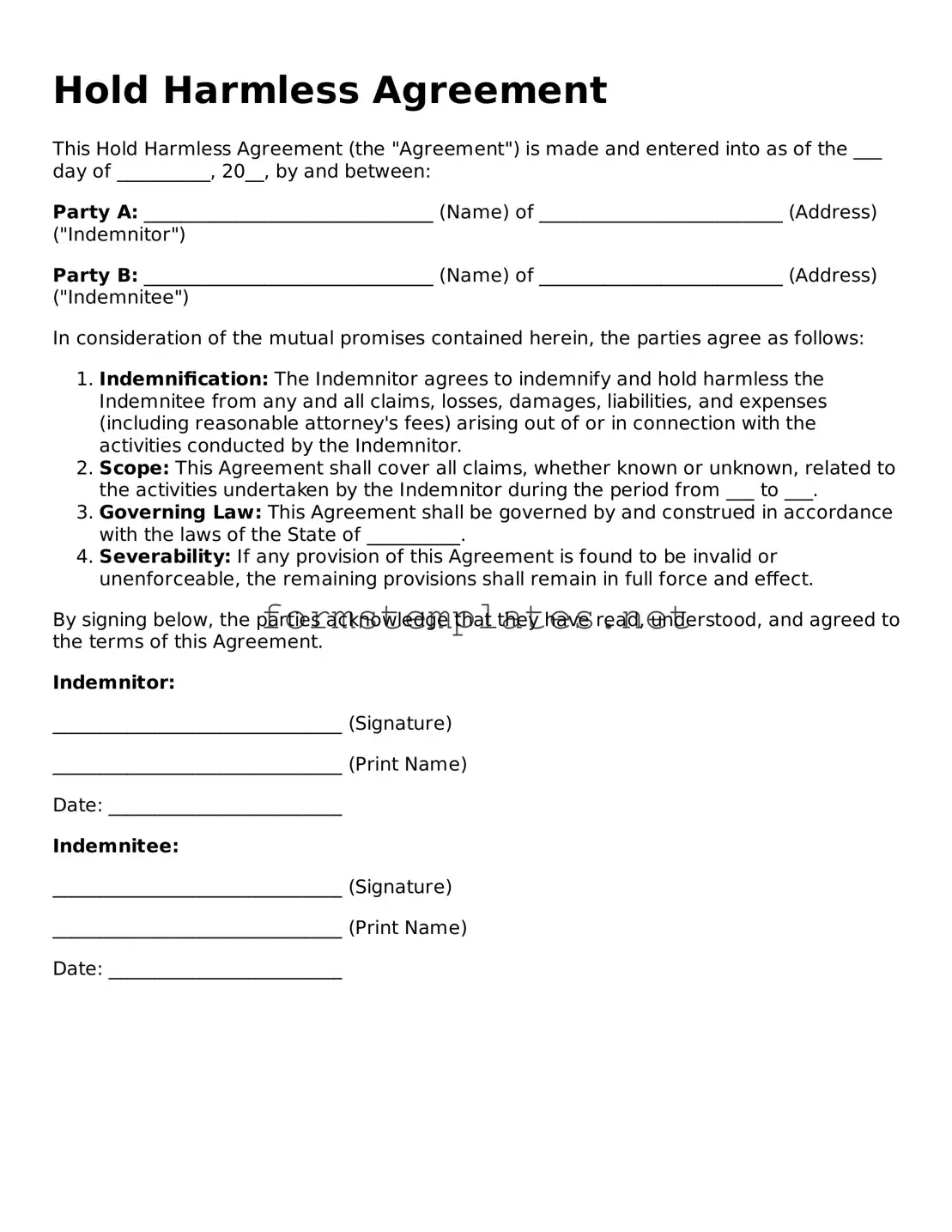Hold Harmless Agreement
This Hold Harmless Agreement (the "Agreement") is made and entered into as of the ___ day of __________, 20__, by and between:
Party A: _______________________________ (Name) of __________________________ (Address) ("Indemnitor")
Party B: _______________________________ (Name) of __________________________ (Address) ("Indemnitee")
In consideration of the mutual promises contained herein, the parties agree as follows:
- Indemnification: The Indemnitor agrees to indemnify and hold harmless the Indemnitee from any and all claims, losses, damages, liabilities, and expenses (including reasonable attorney's fees) arising out of or in connection with the activities conducted by the Indemnitor.
- Scope: This Agreement shall cover all claims, whether known or unknown, related to the activities undertaken by the Indemnitor during the period from ___ to ___.
- Governing Law: This Agreement shall be governed by and construed in accordance with the laws of the State of __________.
- Severability: If any provision of this Agreement is found to be invalid or unenforceable, the remaining provisions shall remain in full force and effect.
By signing below, the parties acknowledge that they have read, understood, and agreed to the terms of this Agreement.
Indemnitor:
_______________________________ (Signature)
_______________________________ (Print Name)
Date: _________________________
Indemnitee:
_______________________________ (Signature)
_______________________________ (Print Name)
Date: _________________________
